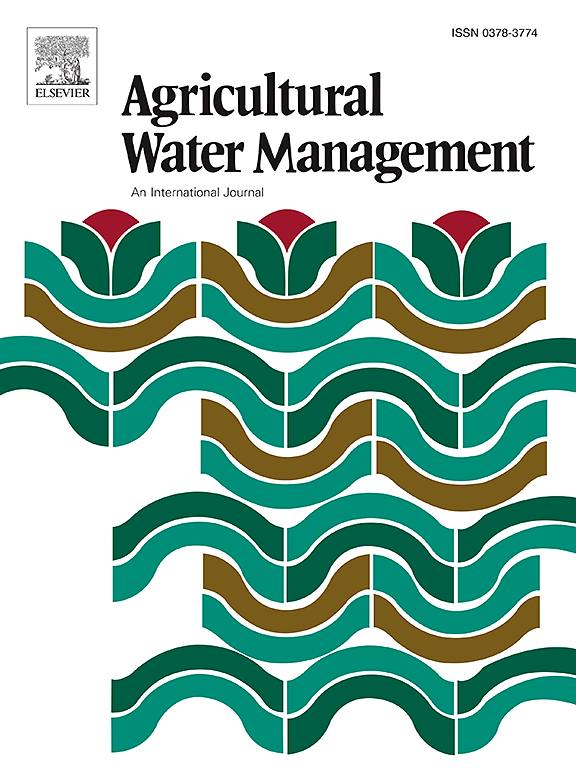Optimization of inner flow dynamics in aeration impact sprinklers through CFD simulation, theoretical analysis, and experimental validation of stabilizer design for enhanced hydraulic performance
IF 5.9
1区 农林科学
Q1 AGRONOMY
引用次数: 0
Abstract
The optimization of sprinkler irrigation's hydraulic performance is a critical challenge for sustainable agriculture, despite its widespread adoption for its efficacy in water conservation and uniform distribution. The uniformity of water distribution, droplet properties, and overall irrigation effectiveness are all greatly impacted by the internal flow dynamics of impact sprinklers. This research enhances the internal flow dynamics of the 20PY2 aeration impact sprinkler through the application of computational fluid dynamics (CFD) simulations, orthogonal experimental design, and ANOVA to assess the influence of stabilizer parameters on hydraulic performance. An optimized flow stabilizer was developed to reduce turbulence, enhance velocity consistency, and promote water distribution. CFD measurements show a significant decrease in turbulent kinetic energy (TKE) to less than 1.0 m²/s², a 1.2 % increase in output velocity, and a 28.4 % decrease in pressure drop. These findings are confirmed by theoretical models, which have absolute errors of 0.06 m²/s² for turbulent kinetic energy (TKE), 2.633 Pa for pressure difference, and 1.82 m/s for velocity. Experimental findings validate an increased nozzle throw range of 13.2–18.2 % at different pressures, attaining a maximum range of 28 m at 400 kPa. The modified stabilizer surpasses the original at all pressures, exhibiting a 3 % greater Coefficient of Uniformity (CU%) at 300 kPa (83 % compared to 80 %), hence enhancing water depth stability. Radial water distribution experiments demonstrate improved misting efficiency, with maximum application rates rising by 1.0 mm/h under elevated pressure settings. These enhancements guarantee more consistent and effective water distribution, fostering sustainable water management in precision irrigation systems.
求助全文
约1分钟内获得全文
求助全文
来源期刊

Agricultural Water Management
农林科学-农艺学
CiteScore
12.10
自引率
14.90%
发文量
648
审稿时长
4.9 months
期刊介绍:
Agricultural Water Management publishes papers of international significance relating to the science, economics, and policy of agricultural water management. In all cases, manuscripts must address implications and provide insight regarding agricultural water management.
 求助内容:
求助内容: 应助结果提醒方式:
应助结果提醒方式:


